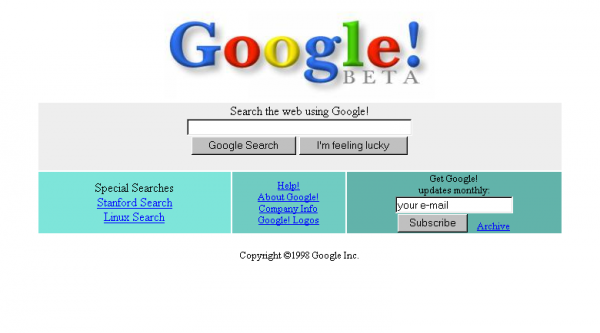A brief history of Google updates
To understand why your site may or may not be doing well in Google, or Bing and Yahoo for that matter, you need to understand where Google has come from and understand why they have made the changes they have.
Many will tell you it is because of X, Y and Z or Google hates “insert generic comment” but ultimately they want to deliver what they deem to be the best results possible. The best results mean quality and relevance and this is the core reason behind their decision, and as such it should be yours too.
So over this series of posts we will look at what changes they have made, when and what the affected/targeted areas were. We have included dates where possible so you can measure your data in line with the releases to determine if your organic traffic was affected or not.
You might ask “Why would a telemarketing agency worry about what happens with the search engines”? There are a number of reasons, but first foremost we care about leads and how our clients win theirs. Secondly we believe that understanding how all of the channels affect lead generation allow us to do our jobs better and increase the results we deliver for our clients.

“Google1998” by Source. Licensed under Fair use via Wikipedia.
It all began with a ‘BackRub’
Google, believe it or not, is the result of a dissertation project by Larry Page and Sergey Brin. In early ’95 Page had been looking at how the World Wide Web was connected by links and the mathematical relationship behind this. This led to the underpinning thought process that the webpages that had the most links pointing to them must be the best or most relevant pages for a given search query.
This collaboration led to the effective prototype of Google; a research project that was named ‘BackRub’. BackRub initially ran on the Stanford servers but after a year in ’96 it had to be moved to its own dedicated servers as it took up too much bandwidth.
In August of 1996 they released ‘some rough statistics’ –
“Total indexable HTML urls: 75.2306 Million, total content downloaded: 207.022 Gigabytes”
What makes this data truly outstanding was that:
(a) The World Wide Web was still really in its infancy
(b) This first crawler started from Page’s own homepage on the Stanford website
Google gets registered
Move onto the 15th of September 1997, and for the first time we see the domain Google.com become registered. The name Google was chosen because the mathematical term ‘googol’ means 1 followed by 100 zeros or .
Fast forward to September 1998 and Google Incorporated is finally born. Google now resides in a Garage rather than in Stanford and it brings in employee number 1 (Craig Silverstone). It was 6 years later in August 2004 that they finally went public with their IPO, over 19M shares were sold and raised $1.67B leading to a market value of over $20B.
By the end of 1998 Google had around 60 Million pages in its index and whilst it wasn’t the first search engine, it was certainly the first that everyone really started to trust in terms of results.
The rest as they say is history in terms of growth and the behemoth company we know as Google today. However, as marketers and business owners with websites we often find ourselves relying on the traffic that Google delivers to support our lead generation and marketing targets.
Why the updates?
So, when Google delivers an update it can cause a number of reactions right across the emotional spectrum. But, whether we like the outcomes or not, Google’s updating of the core algorithm is critical to maintaining what they believe to be best the possible results for users.
Not to mention gaming of the system by unethical search marketing practices…
The google toolbar
The google toolbar was released in late 2000 and with it came a visual indicator of ‘PageRank’. Whilst PageRank is no longer a factor, at the time it was everything. Your PageRank became the focus of all SEO efforts. The belief being that high PageRank led to higher results in the search rankings.
Of course, the biggest reason for Google to release the toolbar was to allow its users to search with Google no matter where they were on the internet.
The first real update
This came in late 2002. Many webmasters and site owners were angry that previously strong performing sites and pages were suddenly dropped without warning (at this time Google gave no warning) about the update or as to what exactly had changed.
It was clear though that Google needed to keep updating the way it worked in order to stay relevant and provide the best results. This trend over the years has led to anger, resignation, despair and yes, even joy. As for every site moved down, someone must move up.
Over the coming posts we go year by year looking at the key updates that happened from 2003 (next post) up until the recent Panda update in 2015.
Tags: Google, Search Engines, SEO

